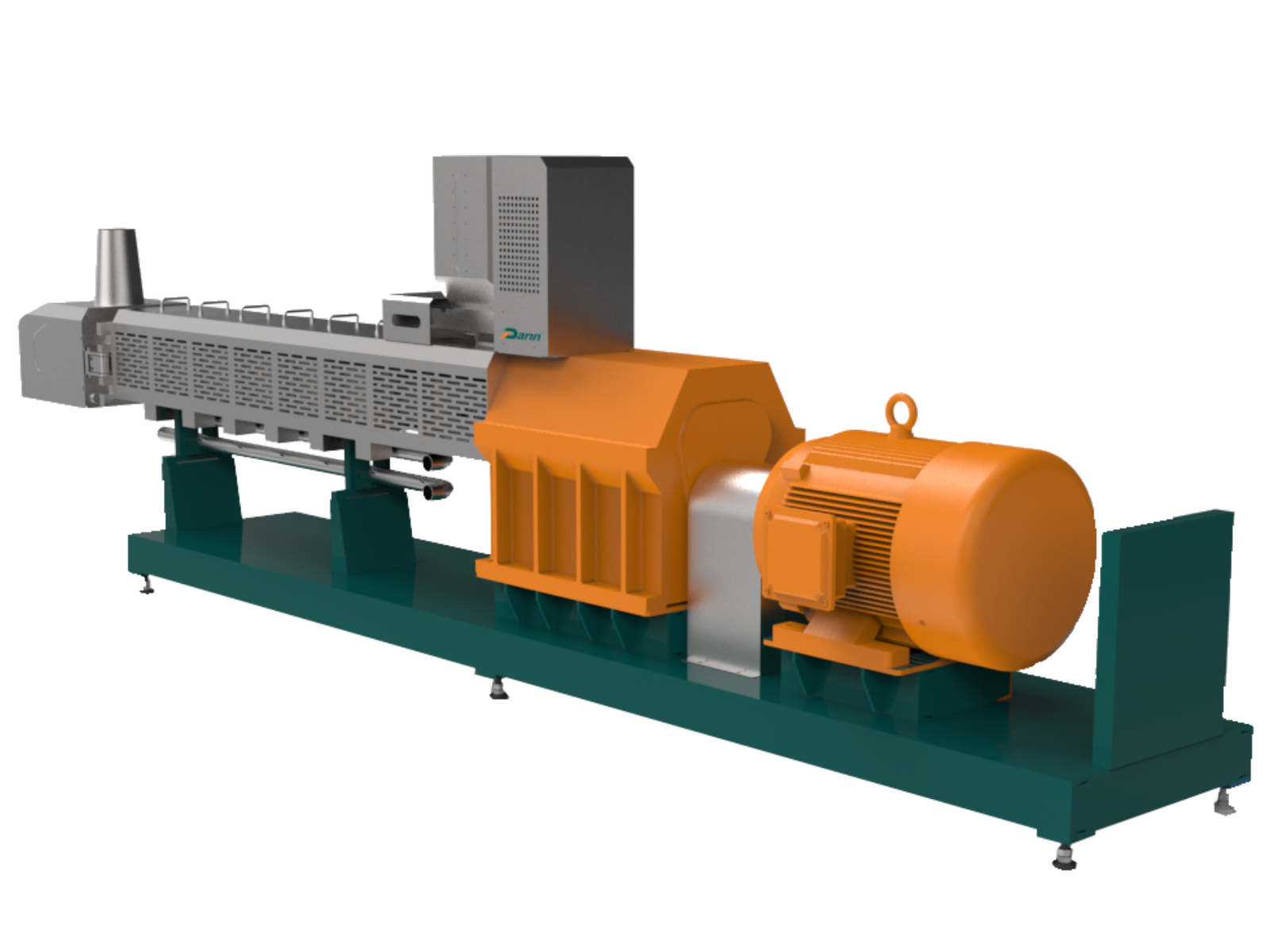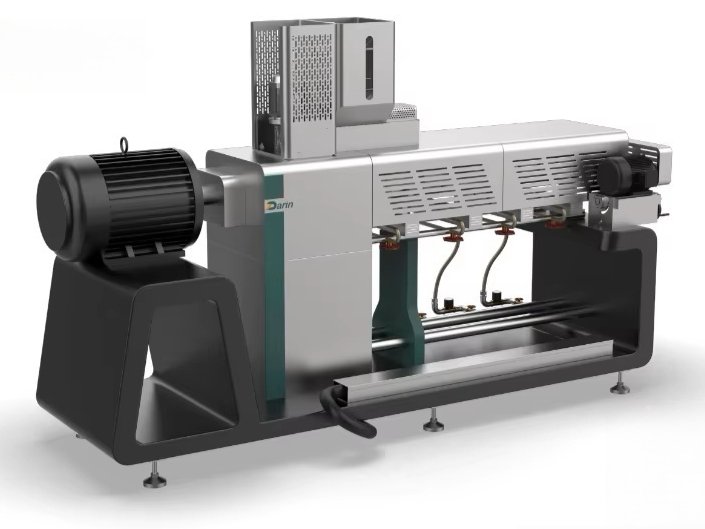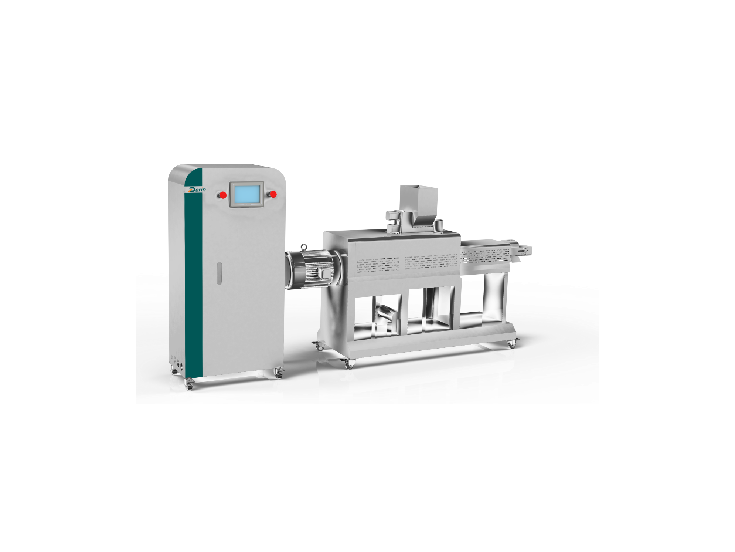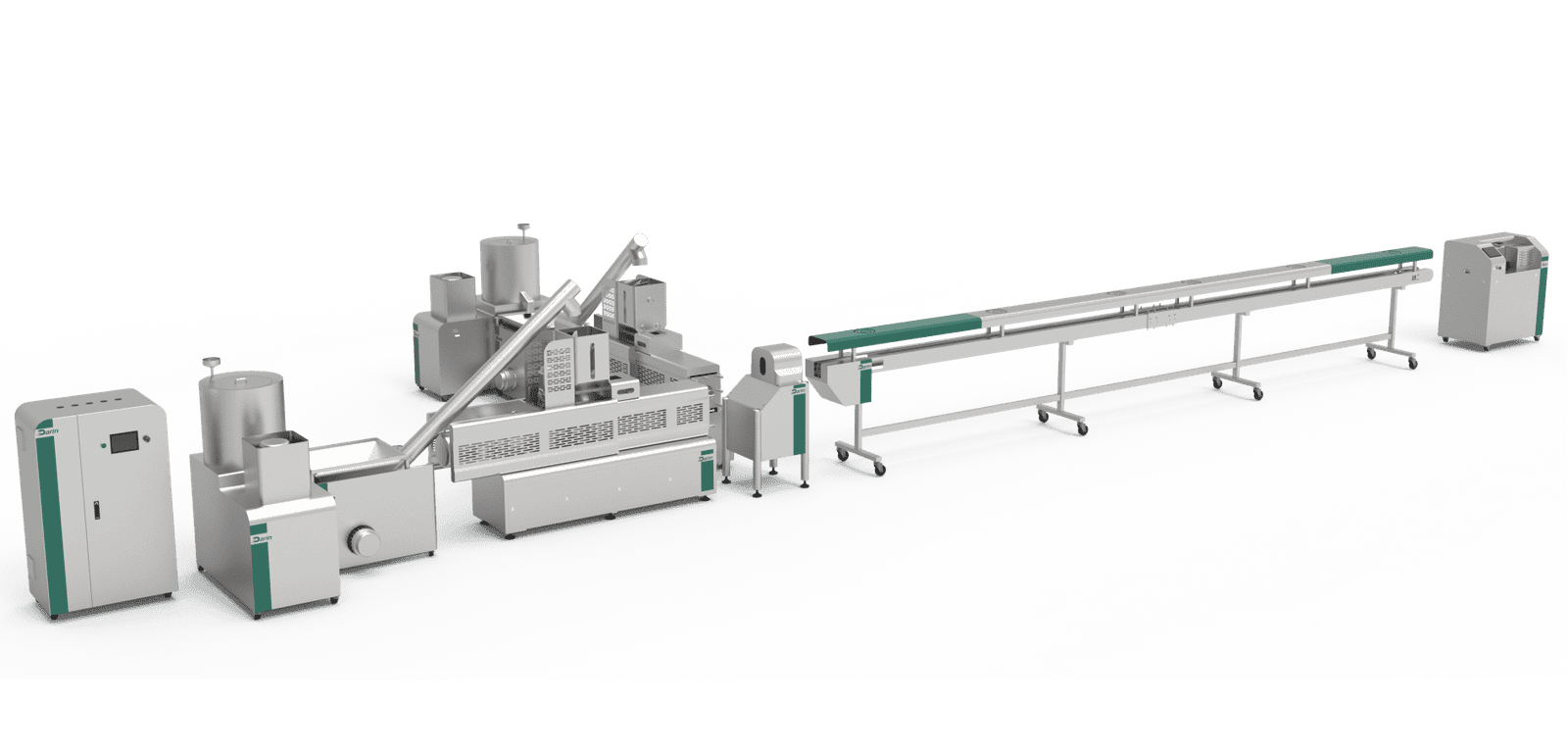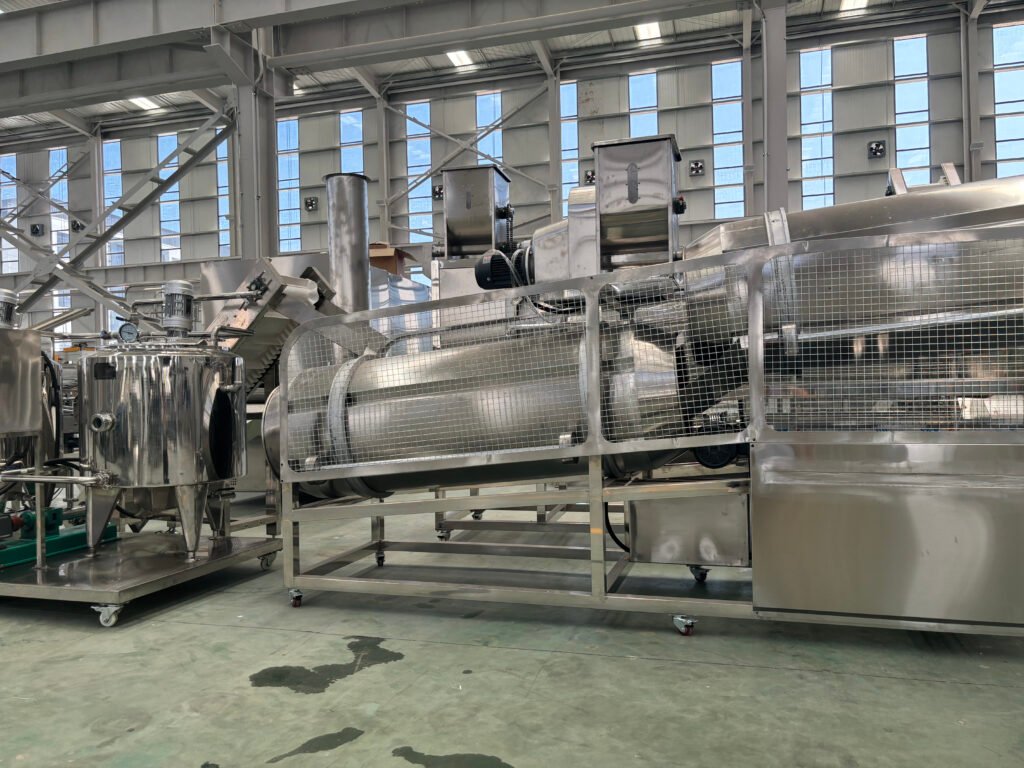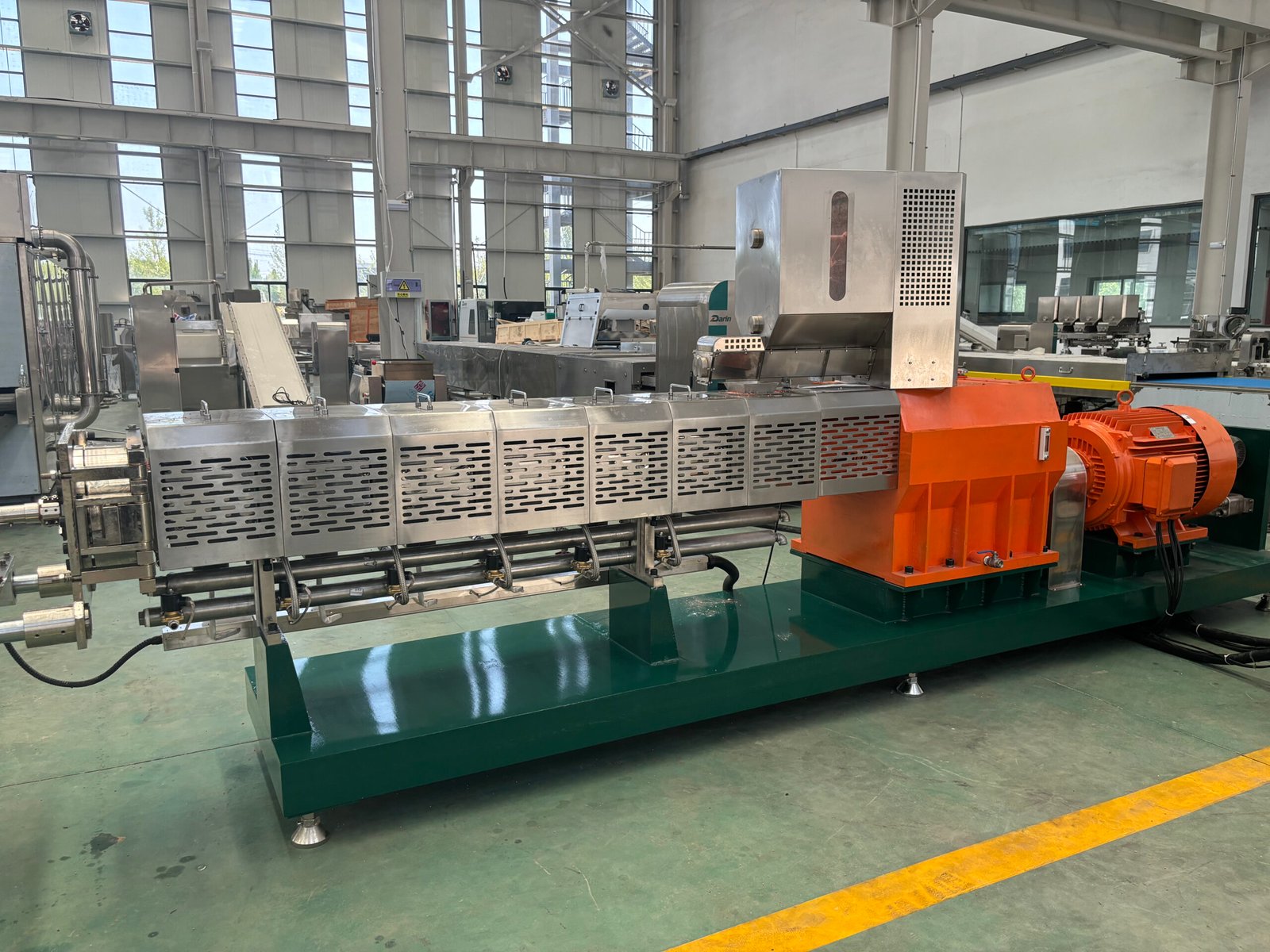
When manufacturers struggle with inconsistent pet food quality, high operational costs, or limited production flexibility, it often stems from using unsuitable extruder technology. These problems can lead to inefficient production, product rejection, and reduced profitability. Understanding the different types of pet food extruders and their applications is key to solving these issues and ensuring efficient, high-quality production.
There are two main types of pet food extruders used in the food industry: single-screw extruders and twin-screw extruders. Each offers unique advantages in terms of production capacity, flexibility, and processing capabilities.
Choosing the right extruder type directly impacts product quality, operational efficiency, and cost savings. Let’s explore the detailed types of pet food extruders, their benefits, and how to select the right one for your manufacturing needs.
What Is a Single-Screw Pet Food Extruder?
Single-screw extruders are the traditional, cost-effective choice for pet food production. They are widely used for dry pet food, snacks, and simple formulations where complex ingredient mixing is not required.
Single-screw extruders use one rotating screw inside a barrel to push and cook ingredients under heat and pressure, forming consistent shapes and textures.
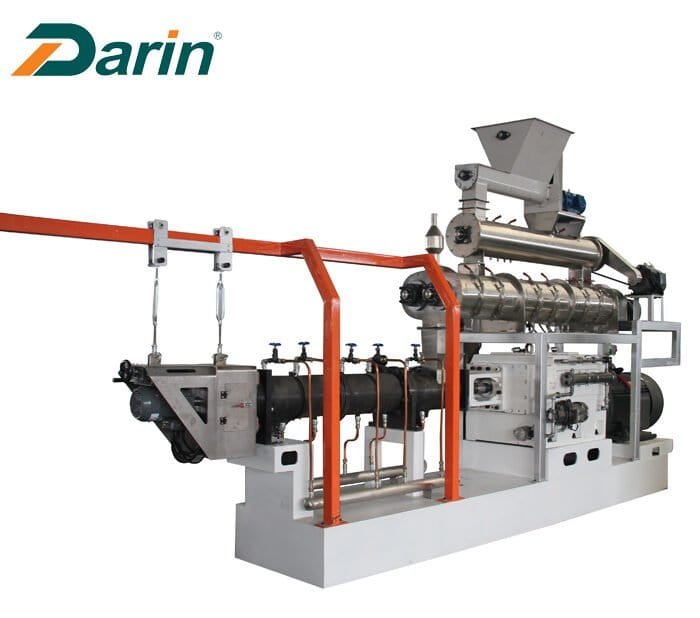
| Feature | Details |
|---|---|
| Structure | One rotating screw |
| Application | Dry kibble, simple recipes |
| Cost | Lower capital investment |
| Maintenance | Simple and affordable |
| Flexibility | Moderate |
| Throughput | Suitable for medium production lines |
Advantages:
- Lower initial investment – suitable for startups or cost-sensitive operations.
- Simplicity in operation and maintenance – ideal for straightforward production.
- Efficient for basic dry kibble – consistent performance with low recipe complexity.
Limitations:
- Not ideal for high-moisture or complex recipes.
- Lower mixing and shearing capabilities.
What Is a Twin-Screw Pet Food Extruder?
Twin-screw extruders are versatile machines ideal for premium pet food production, including treats, high-moisture, and nutritionally dense formulas.
Twin-screw extruders use two intermeshing screws to provide better ingredient mixing, higher shear, and more consistent cooking and shaping, especially for complex formulations.
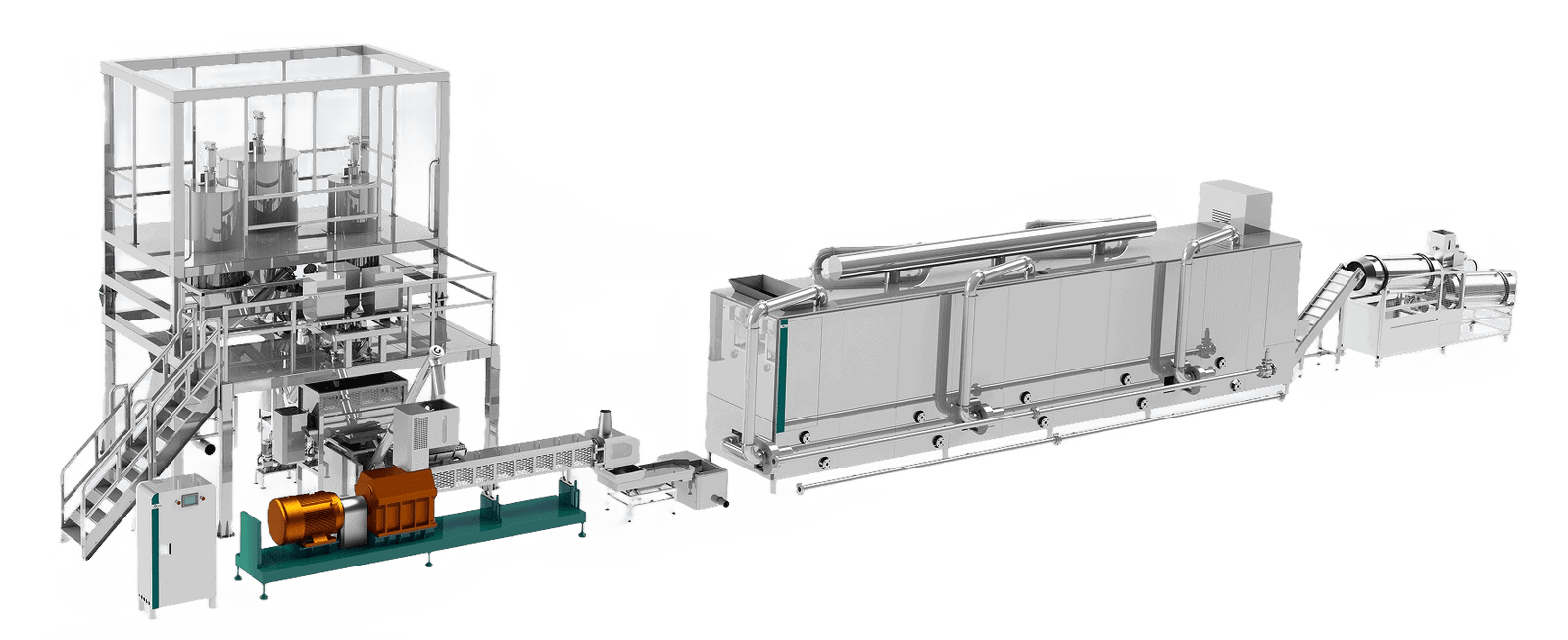
| Feature | Details |
|---|---|
| Structure | Two intermeshing rotating screws |
| Application | Premium kibble, high-protein, moist and semi-moist pet food |
| Cost | Higher capital investment |
| Maintenance | Requires skilled operation |
| Flexibility | Very high |
| Throughput | High capacity for industrial production |
Advantages:
- Superior processing flexibility – handles a wide range of ingredients.
- Consistent product quality – precise control of temperature and shear.
- Supports innovation – suitable for producing novel shapes and textures.
Limitations:
- Higher equipment and operating costs.
- More complex to maintain and clean.
What Are the Specialized Extruder Types in Pet Food Production?
Beyond the main single and twin-screw categories, specialized extruders cater to niche production needs like wet food and high-fat content formulations.
Specialized extruders include co-rotating extruders, cold extruders, and high-moisture extruders—each tailored for specific product characteristics and texture demands.
| Type | Purpose | Key Advantage |
|---|---|---|
| Co-rotating twin-screw | High-performance mixing | Ideal for complex formulations |
| Cold extruder | No cooking phase | Suitable for soft-textured or refrigerated products |
| High-moisture extruder | Produces wet food | Enhanced palatability and digestibility |
Applications:
- Cold extruders are widely used in semi-moist or soft dog treats.
- High-moisture extruders are essential for canned or pouch wet food.
- Co-rotating designs improve uniform ingredient distribution.
How to Choose the Right Pet Food Extruder for Your Business?
Choosing the right extruder depends on your product line, production volume, ingredient flexibility, and investment capacity.
Evaluate your product goals and technical needs to determine whether a single-screw, twin-screw, or specialized extruder offers the best return on investment.
| Factor | Recommendation |
|---|---|
| Startups with basic dry kibble | Single-screw extruder |
| High-end formulations | Twin-screw extruder |
| Moist or semi-moist products | Cold or high-moisture extruder |
| High throughput requirement | Twin-screw or co-rotating extruder |
| Limited budget | Single-screw with upgrade path |
Key Considerations:
- Ingredient variability
- Product texture expectations
- Energy consumption
- Labor and skill availability
- Regulatory and safety compliance
Conclusion
Understanding the different types of pet food extruders empowers manufacturers to make informed decisions that improve efficiency, product quality, and profitability. Whether producing simple dry kibble or premium, high-moisture pet treats, choosing the right extruder technology is essential to business success in a competitive pet food market.
Contact Us
If you're unsure which pet food extruder suits your operation, our expert team is here to help. Contact us for customized advice, pricing, or to schedule a consultation.
FAQ
Q1: What are the main types of pet food extruders?
A1: The primary types of pet food extruders used in the food industry are single-screw and twin-screw extruders. Single-screw extruders are more common and economical, mainly used for dry pet food production. They work by moving ingredients through a barrel with one rotating screw. Twin-screw extruders offer greater flexibility, enhanced mixing capabilities, and are ideal for high-moisture or complex formulations. They are often used in premium pet food manufacturing due to their ability to handle a wider range of ingredients and product textures.
Q2: How does a single-screw extruder work in pet food production?
A2: A single-screw extruder operates by pushing a mix of pet food ingredients through a cylindrical barrel using a rotating screw. As the mixture advances, it undergoes heat and pressure, leading to partial cooking and shaping. At the end of the barrel, a die shapes the extruded product into kibble or pellets. This method is efficient, cost-effective, and suitable for producing large quantities of dry pet food.
Q3: Why is a twin-screw extruder preferred for certain pet food applications?
A3: Twin-screw extruders are favored for their greater control, flexibility, and versatility. They use two intermeshing screws, allowing better mixing of ingredients, consistent product quality, and the ability to process sticky or high-fat materials. They're ideal for specialty pet foods, high-moisture diets, and recipes with diverse ingredient profiles. Additionally, they provide more control over temperature and pressure, which is beneficial for nutrient retention and textural quality.
Q4: Is there a difference in nutritional quality between extruder types?
A4: Yes, the type of extruder can impact the nutritional quality of the final pet food. Twin-screw extruders allow for more precise temperature and moisture control, which helps in preserving nutrients during processing. This leads to more digestible and palatable products. Single-screw extruders may lose more nutrients due to less control over these variables, though they still produce nutritionally balanced food when used correctly.
Q5: What factors influence the choice of extruder in the food industry?
A5: Choosing an extruder depends on several factors: product type, ingredient formulation, production scale, desired texture, and budget. For high-volume, standard kibble, single-screw extruders are often sufficient and economical. For innovative products with complex textures or premium nutritional profiles, twin-screw extruders are the better choice. Maintenance costs, energy efficiency, and operator skill also play roles in equipment selection.
References
- Types of Extruders Used in Food Processing – https://www.sciencedirect.com/topics/food-science/extrusion-cooking – ScienceDirect
- Pet Food Extrusion Technology – https://www.researchgate.net/publication/328762747 – ResearchGate
- Twin-Screw vs Single-Screw Extruders – https://www.buhlergroup.com – Bühler Group
- Pet Food Processing Equipment – https://www.extru-techinc.com/technologies/extrusion – Extru-Tech Inc.
- Advances in Pet Food Extrusion – https://ifst.onlinelibrary.wiley.com/doi/full/10.1111/ijfs.14021 – Wiley Online Library
- Twin-Screw Extrusion Benefits – https://www.clextral.com/technology/twin-screw-extrusion/ – Clextral
- Nutritional Impacts of Extrusion – https://www.ncbi.nlm.nih.gov/pmc/articles/PMC8313724/ – NCBI
- Choosing the Right Extruder – https://www.bakerperkins.com/food/pet-food/extrusion/ – Baker Perkins


